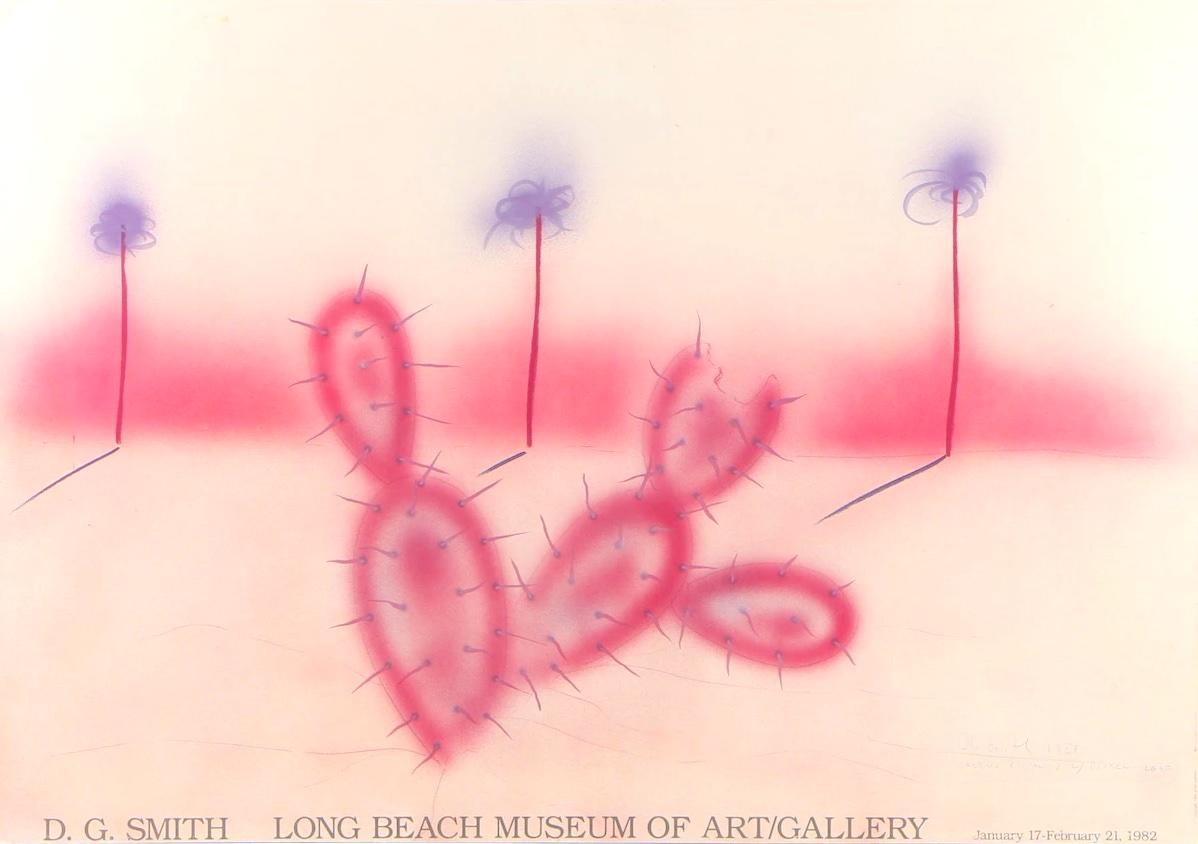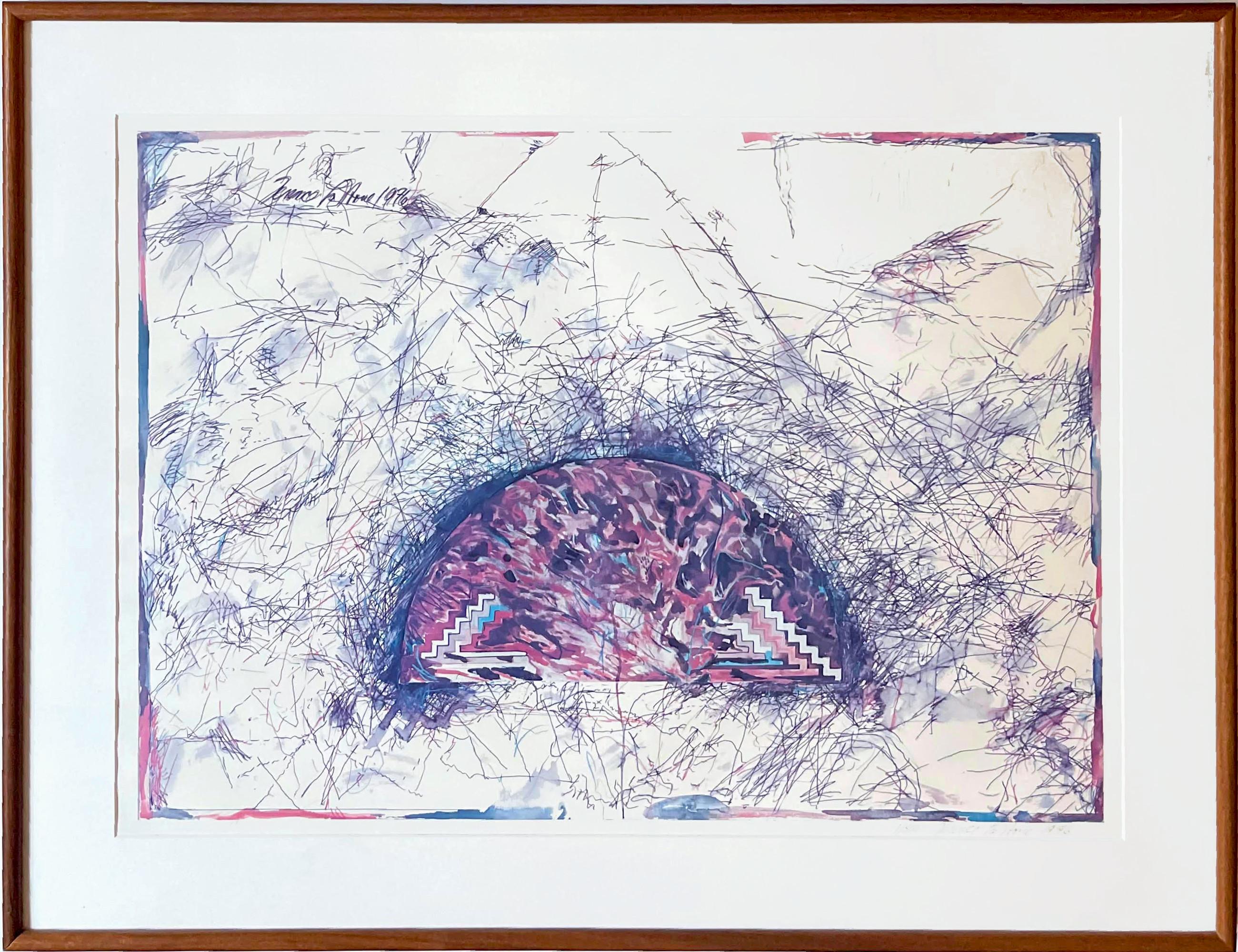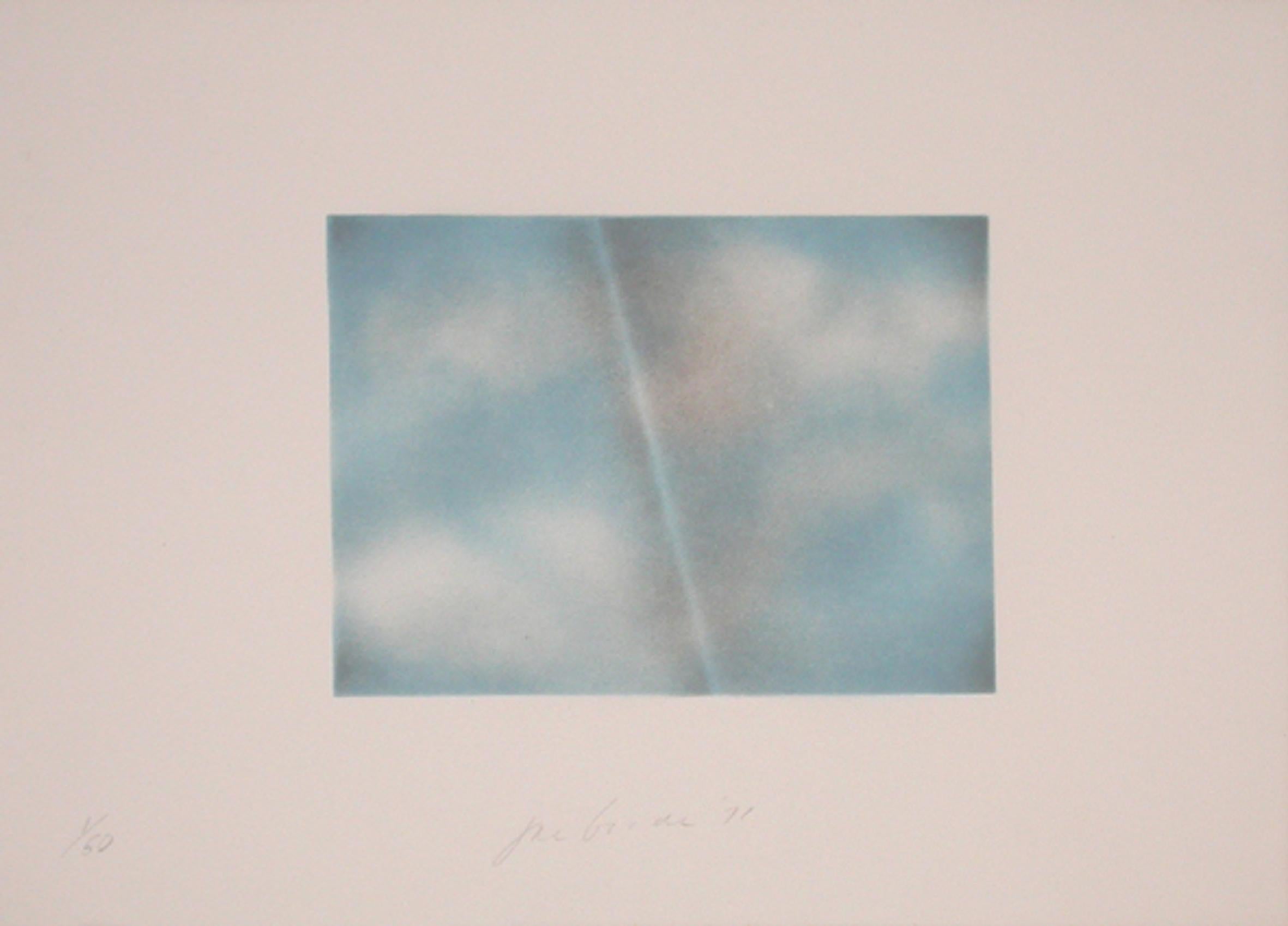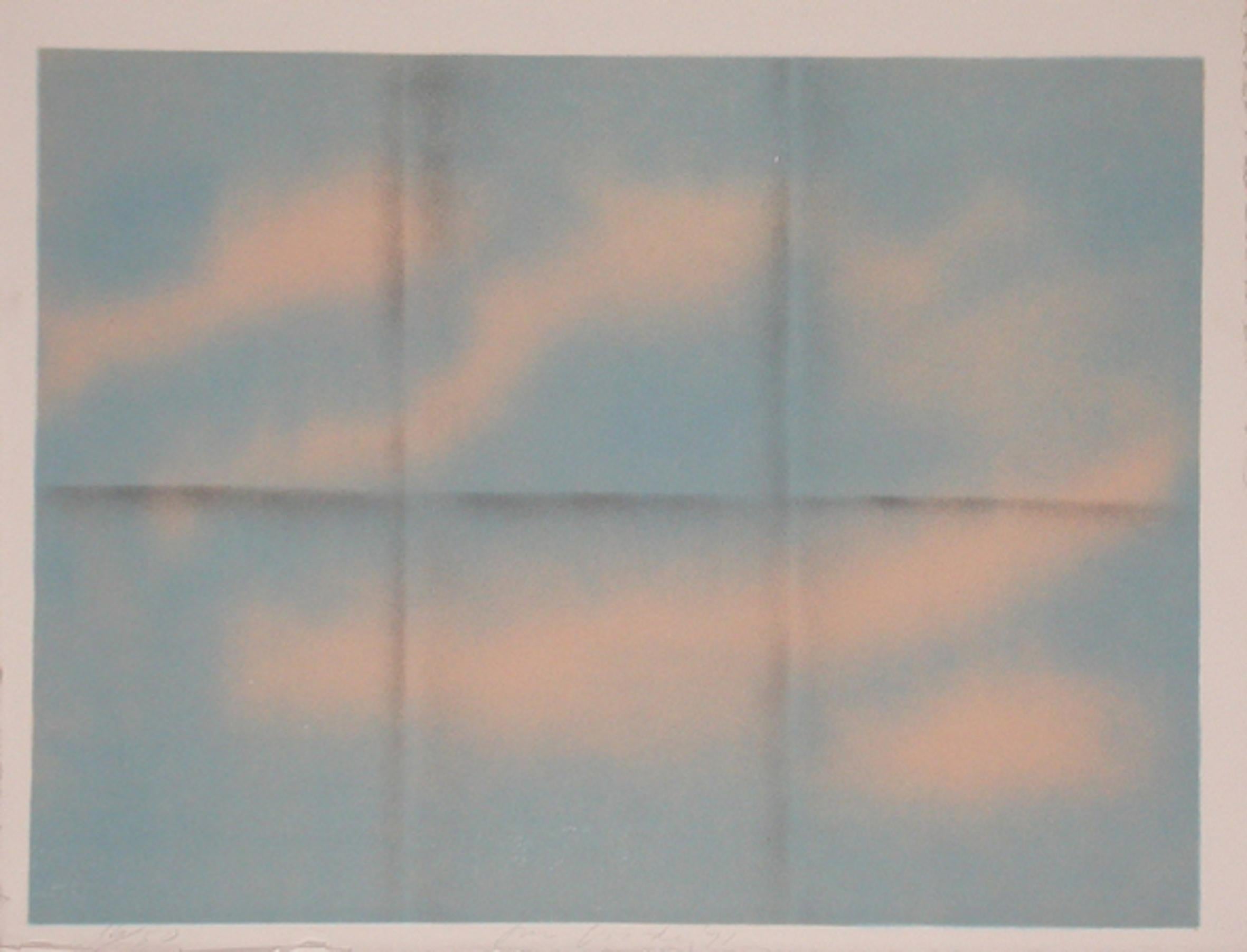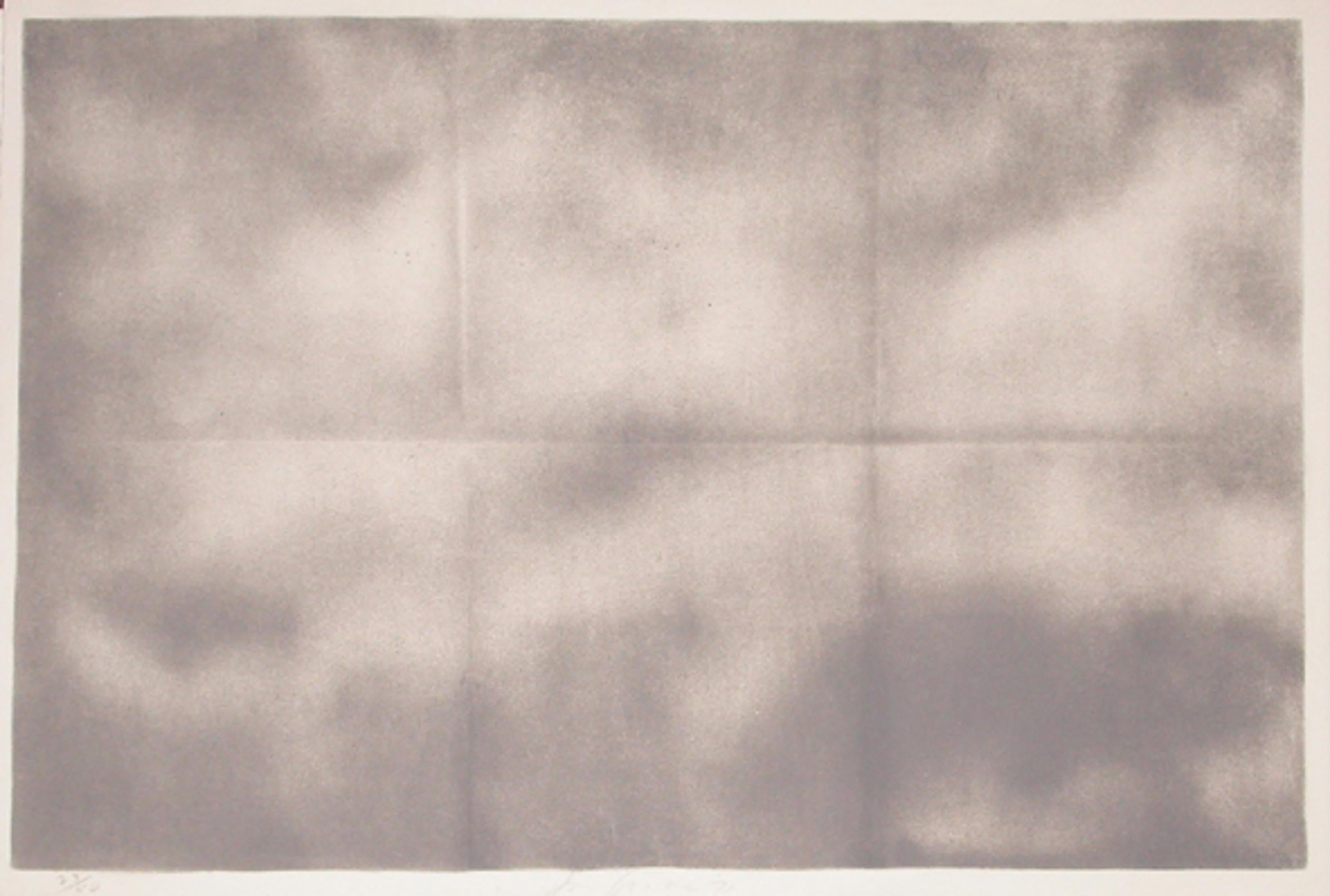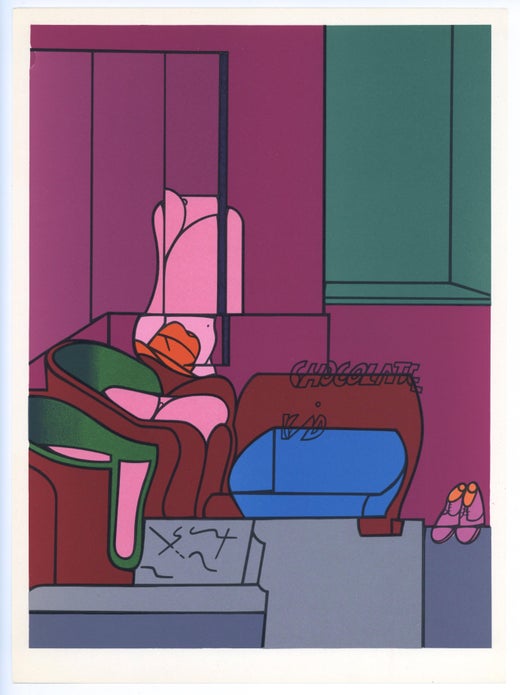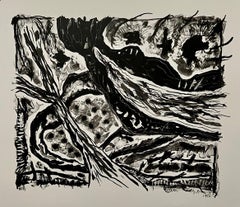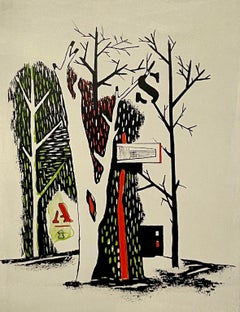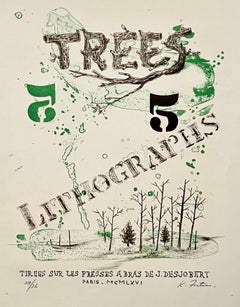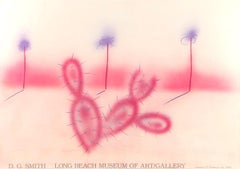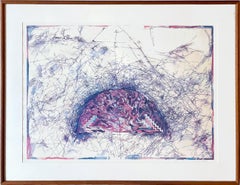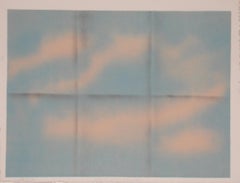Titled Ledoux, color limited edition lithograph.
Hand signed by artist in pencil to right hand corner, 101/150 to left.
19.5" X 14" print view area.
This is done in a Postmodernist, Memphis Milano style.
Valerio Adami (born 17 March 1935) is an Italian painter. Educated at the Accademia di Brera in Milan, he has since worked in both London and Paris. His art is influenced by Pop Art.
Adami was born in Bologna. In 1945, at the age of ten, he began to study painting under the instruction of Felice Carena. He was accepted into the Brera Academy (Accademia di Brera) in 1951, and there studied as a draughtsman until 1954 in the studio of Achille Funi. In 1955 he went to Paris, where he met and was influenced by Roberto Matta and Wifredo Lam. His first solo exhibition came in 1959 in Milan.
In his early career, Adami's works were expressionistic, but by the time of his second exhibition in 1964 at Kassel, he had developed a style of painting reminiscent of French cloisonnism, featuring regions of flat color bordered by black lines. Unlike Gauguin, however, Adami's subjects were highly stylized and often presented in fragments.
In the 1970s, Adami began to address politics in his art, and incorporated subject matter such as modern European history, literature, philosophy, and mythology. In 1971, he and his brother Giancarlo created the film Vacances dans le désert. In 1974 he illustrated a Helmut Heissenbuttel poem, Occasional Poem No. 27. Ten Lessons on the Reich with ten original lithographs {Galerie Maeght}. In 1975, the philosopher Jacques Derrida devoted a long essay, "+R: Into the Bargain", to Adami's work, using an exhibition of Adami's drawings as a pretext to discuss the function of "the letter and the proper name in painting", with reference to "narration, technical reproduction, ideology, the phoneme, the biographeme, and politics". The Galerie Maeght is a gallery of modern art in Paris, France, and Barcelona, Catalonia, Spain. The gallery was founded in 1936 in Cannes. The Paris gallery was started in 1946 by Aimé Maeght. The artists exhibited are mainly from France and Spain. Since 1945, the gallery has presented the greatest modern artists such as Matisse, Bonnard, Braque, Miró, and Calder. In 1956, Adrien Maeght opened a new parisian venue. The second generation of “Maeght” artists was born: Bazaine, Andre Derain, Giacometti, Kelly, Raoul Ubac, then Riopelle, Antoni Tapies, Pol Bury and Adami, among others. There were four retrospective exhibits of Adami's work between 1985 and 1998. They were held in Paris, the Centre Julio-Gonzalez de Valence (Spain), Tel Aviv, and Buenos Aires. In 2010, the Boca Raton Museum of Art devoted a special exhibit to Adami's Post Modern paintings and drawings.
Derriere le Miroir, the editor was Aimé Maeght. Derrière le Miroir is a French art magazine created in 1946 and published until 1982.Art galleries, auction houses and booksellers often refer to this art magazine simply as DLM. Its beginning coincides with the end of Second World War and the return of a number of exiled artists back to France. Its original articles and illustrations (mainly original color lithographs by the gallery artists) were famous at the time.
The magazine covered only the artists exhibited by Maeght gallery either through personal or group exhibitions. Among them are Pierre Alechinsky, Francis Bacon, Georges Braque, Pol Bury, Alexander Calder, Marc Chagall, Eduardo Chillida, Alberto Giacometti, Wassily Kandinsky, Ellsworth Kelly, Fernand Léger, Richard Lindner, Henri Matisse, Joan Miró, Saul Steinberg, Antoni Tapies,
Among the authors publishing essays and poems are Guillaume Apollinaire, Yves Bonnefoy, André Breton, Jean Cassou, Jacques Prévert, Michel Seuphor, Jean Tardieu and many others.
There was also published in a deluxe edition (in French: "éditions de tête") on heavy paper such as chiffon de la Dore, chiffon de Mandeure, vélin d'Arches, vélin de Lana ou vélin de Rives. The majority of the deluxe editions were signed by the artist on the justification page. The deluxe editions are normally limited to 150 numbered copies (and a few hors commerce).
